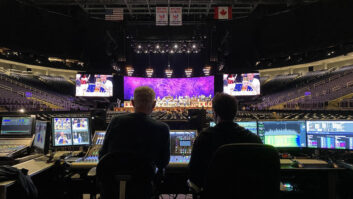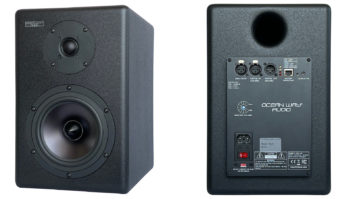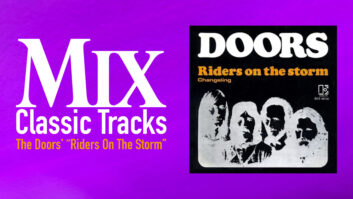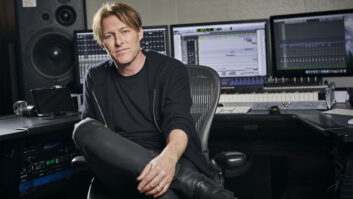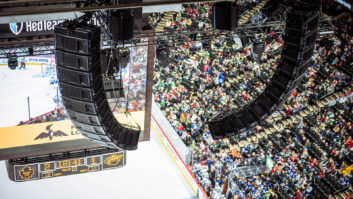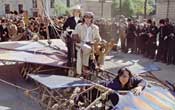
Maybe it was a gimmick, maybe it was good business sense, but originally the shoot for director Frank Coraci’s new version of Around the World in 80 Days — with Jackie Chan, of all people, tumbling and kicking his way through exotic ports of call as the irrepressible Passepartout — was scheduled to last — 80 days. “I think in the end, it ended up being around 90,” says the film’s England-based production sound mixer, Ian Voigt, with a chuckle. “But it all went very smoothly. From our standpoint, with the dialog, we were very lucky and quite successful, considering.”
Considering…that the film, again based on Jules Verne’s classic novel, is set in the 19th century and was filmed entirely in Thailand and Germany — one a modern, noisy, tropical environment, and the other a modern, noisy urban environment. “Bangkok is incredibly busy,” Voigt says by phone from Morocco, where he’s working on a film called The Walk, “and, obviously, you can’t have cars and all on your audio track, but we worked around it somehow. There were times when we were shooting in the heart of the city and we got away with murder [sound-wise]. We even worked through a blackout.”

Ian Voigt, right, with boom operator Simon Firsht
Voigt, who has done production sound work on such films as Shanghai Knights (another Jackie Chan vehicle), Behind Enemy Lines, The Mummy Returns, Spice World and the just-completed remake of The Flight of the Phoenix, reveals that various locales in Thailand doubled for India and China, while parts of Berlin were transformed into Paris and Versailles. With its intense heat and humidity, Thailand proved to be the more difficult location. “You walk off the plane and you’re instantly drenched in sweat,” Voigt says. “You put extra silica packs in your gear to keep it all dry, and then it’s just a matter of adjusting. We shot all the train scenes in Thailand using a train on a gimbal [augmented by blue-screen exteriors], and I swear the temperature inside with the lights and everything would get up to 120, 130 degrees.”
Voigt’s rig for location sound, which he packs into a large flight case, has evolved through the years to include a blend of proven recent technologies and a few time-tested old favorites. He’s eschewed the Nagra D (“a beautiful machine, but a little cumbersome,” he says) for a 4-channel Zaxcom Deva II digital recorder/mixer, “which has been really great so far. It’s given me no problems at all and it has an amazing storage capacity: I can have a month’s worth of work stored in it. Also, it goes directly into the Avid so it’s faster on [the post] end.” He also carries an Audio Developments 146 8-channel mixer, an Audio Ltd. quad rack with four diversity receivers to handle his RF mic needs and two additional Audio Ltd. 2020 transmitters, a TFT (Thin Film Transistor) monitor, a 4.7GB Panasonic DVD-RAM drive (for downloading rushes sent to editorial and post), a Black Box Monster 40 amp-hour 12-volt cell and a Nagra IV-S analog backup. Voigt and his boom operator of several years, Simon Firsht, use a range of different mics, including Sennheiser MKH-60 short shotguns (used for most outdoor work), Sennheiser 816s and Neumann KMR 82 long shotguns.
“Besides doing all the dialog,” Voigt says, “I also did some effects tracks, especially in Thailand, where there were all sorts of great birds and interesting sounds once you got out of the city a bit. Actually, there was a time when we were on location and there was this incredibly loud bird that was all over the scene we were shooting. People were throwing rocks at it to try to get it to fly away; nothing worked. In the end, we just let it go. So the bird is on there; it’s fine,” he says with a laugh.
The film also required a considerable amount of blue-screen work on sets, but because those shots usually also employed wind machines, most of the live production tracks from those sessions were not usable. “Still,” Voigt notes, “we would usually do wild tracks just for the editors to have some kind of guide track to work with.”
In the end, Voigt says, “All the things that could’ve gone wrong — with the weather, with equipment, whatever — didn’t for a change.” On what turned out to be a relatively carefree show, Voigt did learn at least one new audio factoid, however: “There was this one exterior night shot where Jackie [Chan], Steve Coogan [who plays Phileas Fogg] and the girl [Cécile De France, who plays Monique La Roche] are clinging to the side of an elephant and having a conversation. What we discovered is that RF doesn’t travel through an elephant. We were on the wrong side of the elephant. Now we know.” Production mixers, take note.
